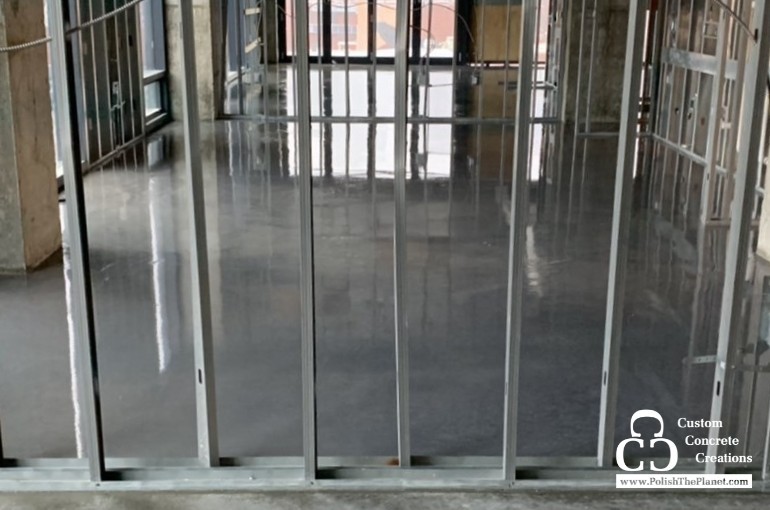
Concrete is a versatile and durable flooring option that offers a wide range of benefits for both residential and commercial spaces. When it comes to enhancing the appearance and performance of concrete floors, two common treatments are often considered: polishing and sealing. While both processes involve treating the surface of the concrete, they serve distinct purposes and yield different results. Let's delve into the differences between polished and stained concrete floors to help you make an informed decision!
Polished concrete: A gleaming finish
Polished concrete is achieved through a multi-step process that involves mechanically grinding, honing and polishing the surface of the concrete to achieve a smooth, glossy finish. The process typically begins with coarse diamond grinding to remove surface imperfections and achieve the desired level of flatness. Successive passes with finer diamond abrasives gradually refine the surface, resulting in a high-gloss sheen that enhances the natural beauty of the concrete.
The benefits of polished concrete are manifold. Not only does it impart a sleek and modern aesthetic to any space, but it also offers exceptional durability and longevity. Polished concrete floors are resistant to abrasion, staining and wear, making them ideal for high-traffic areas such as retail stores, warehouses and industrial facilities. Polished concrete is easy to clean and maintain, requiring minimal upkeep to retain its luster and performance over time.
Polished concrete works best in spaces such as retail stores, commercial offices, showrooms and exhibition areas, and restaurants and cafes.
Sealed concrete: Protection and preservation
Sealing concrete involves applying a protective coating or sealer to the surface of the concrete to enhance its durability and resistance to stains, moisture and damage. Concrete sealers come in various formulations, including acrylic, epoxy, polyurethane and penetrating sealers, each offering specific benefits depending on the application and desired level of protection.
Unlike polished concrete, which focuses primarily on enhancing the appearance of the concrete, sealing concrete is primarily aimed at protecting and preserving the substrate. Concrete sealers create a barrier on the surface of the concrete, preventing liquids, oils and contaminants from penetrating and causing damage. Sealers can enhance the color and texture of the concrete, providing a subtle sheen or matte finish depending on the sealer type.
Sealed concrete is best for spaces such as garages, workshops, airplane hangars, chemical storage areas, basements and cellars.
Choosing the right treatment
When deciding between polished and stained concrete floors, it's essential to consider your specific requirements and preferences. If you're looking to achieve a glossy, reflective finish with enhanced durability and abrasion resistance, polished concrete may be the ideal choice. On the other hand, if you prioritize protection against stains, moisture and damage while maintaining the natural appearance of the concrete, sealing may be more suitable.
In some cases, a combination of both treatments may be beneficial. For example, you may choose to polish the concrete first to achieve the desired level of sheen and then apply a sealer to provide additional protection and longevity.
Contact us for polished and stained concrete floors
While polished and sealed concrete serve different purposes, both treatments offer unique benefits for enhancing the appearance and performance of concrete floors. By understanding the differences between the two and assessing your specific needs, you can make an informed decision that ensures your concrete floors look great and stand the test of time! Contact us today with any questions or to begin discussing your project.
